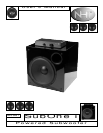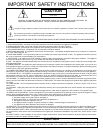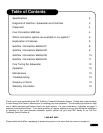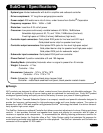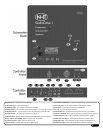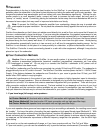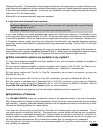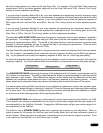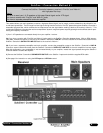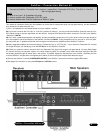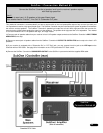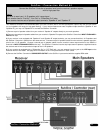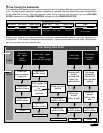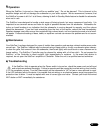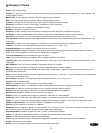
Methods #2 and #4). The downside is that sending the speakers a full-range signal can make it difficult to inte-
grate them with the subwoofer, as their combined low frequency output can cause irregularities (peaks and dips)
in the room’s low frequency response. In this case, the subwoofer’s low pass setting should be quite low and
used only to fill in the lowest octave.
Method #3 is not recommended with large main speakers.
2. If you have small (bookshelf) main speakers...
If your main speakers are smaller bookshelf-type models with limited bass response, it is advisable to send
them a high-pass filtered signal (Method #1 or #3). All low bass information is removed from the signal before
it reaches the speakers, and all low frequencies are reproduced exclusively by the subwoofer. Because the L
& R speakers receive a signal containing only information that falls within their specified frequency response
range, they exhibit reduced distortion, greater dynamic range and power handling. Use the 75Hz or 110Hz high
pass setting.
Alternately, you can run small main speakers full range and use the subwoofer to reproduce all the low bass fre-
quencies below their response capabilities (Methods #2 and 4). While simple, this configuration does not remove
the burden of low frequencies from the L & R speakers and may limit their output at higher volumes.
!!
What connection options are available in my system?
1) If you have a separate preamplifier and main amplifier, all four of the connection methods are available to
you. Method #1 is recommended.
2) If you have an integrated amplifier or receiver (hereafter called “receiver”) with “Pre-Out” and “Main-In” con-
nections, all four of the connection methods are available to you. Method #1 is recommended.
3) If you have a receiver with "Pre-Out" or "Line-Out" connections, but no main in connections, you may use
Methods #2, #3 or #4.
4) If you have a receiver with "Pre-Out" or "Line-Out" connections, you may use Methods #2, #3 or #4.
5) If your receiver or processor has a "Subwoofer Out" or "LFE Out" connection, you may use any of Methods
#1 through #4, or simply connect the "Subwoofer Out" or "LFE Out" jack to the SubTwo I Controller. See the
Use of the LFE Input and LFE Gain Control section for more information.
Detailed descriptions and diagrams of all four connection methods are found on pages 8-11.
!!
Explanation of Features
The VOLUME CONTROL allows you to adjust the volume of the subwoofer relative to the rest of the system.
Many listeners make the mistake of setting subwoofers too loud, which can cause excess bloat and loss of detail
and musicality. A properly calibrated subwoofer blends in with the speakers and does not call attention to itself.
Observe the following guidelines for volume setting:
Turn down the volume control on the SubOne i Controller to its lowest position (counter-clockwise). Turn on
your audio system, including the SubOne i. Play some music you are familiar with and set your receiver/pre-
amplifier volume to a comfortable listening level. Slowly increase the volume on the SubOne i Controller, lis-
tening for proper frequency balance. When the subwoofer output is balanced with the rest of the system, you
will hear improved bass extension, but you should be unaware that it is coming from the subwoofer!
From this point on, the volume control on your receiver/preamplifier will control the overall volume of your sys-
tem, including the subwoofer.
1st Choice: Method #1 (line-level and/or LFE input connection with high-pass filter loop and Dolby
®
Digital reciever set to ‘small’)
2nd Choice: Method #3 (speaker-level connection with fixed high-pass filter)
5



